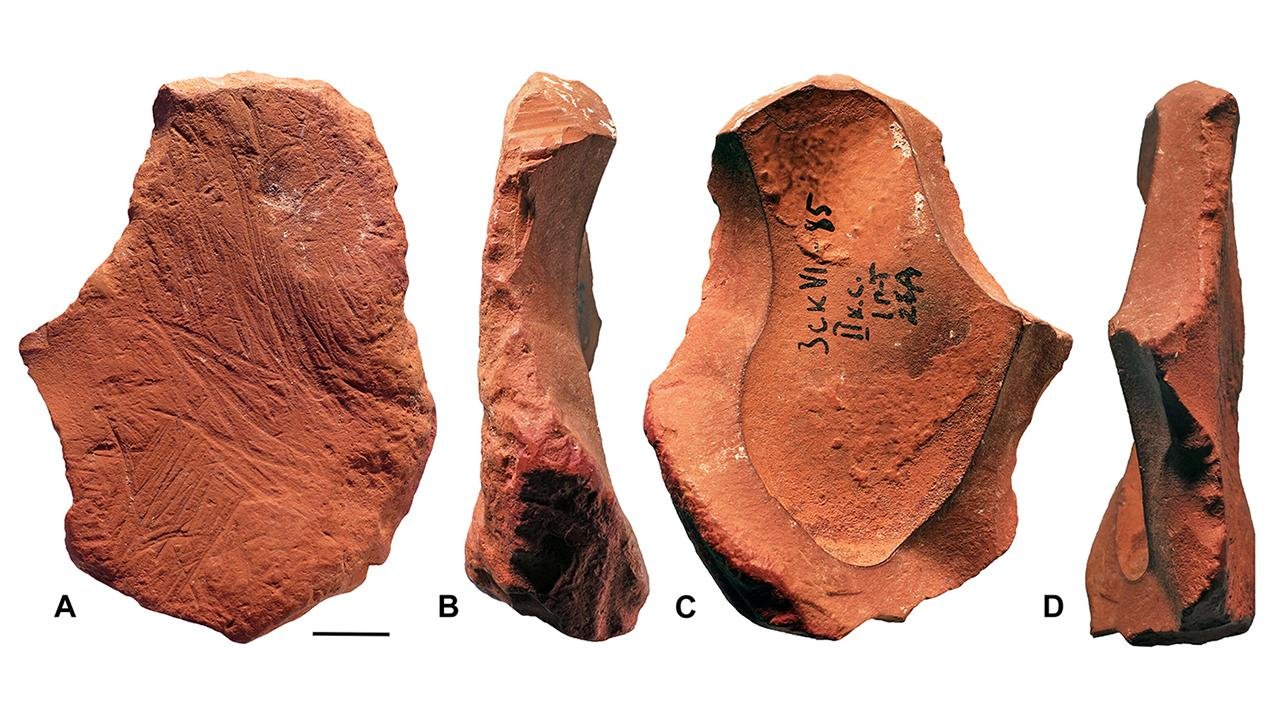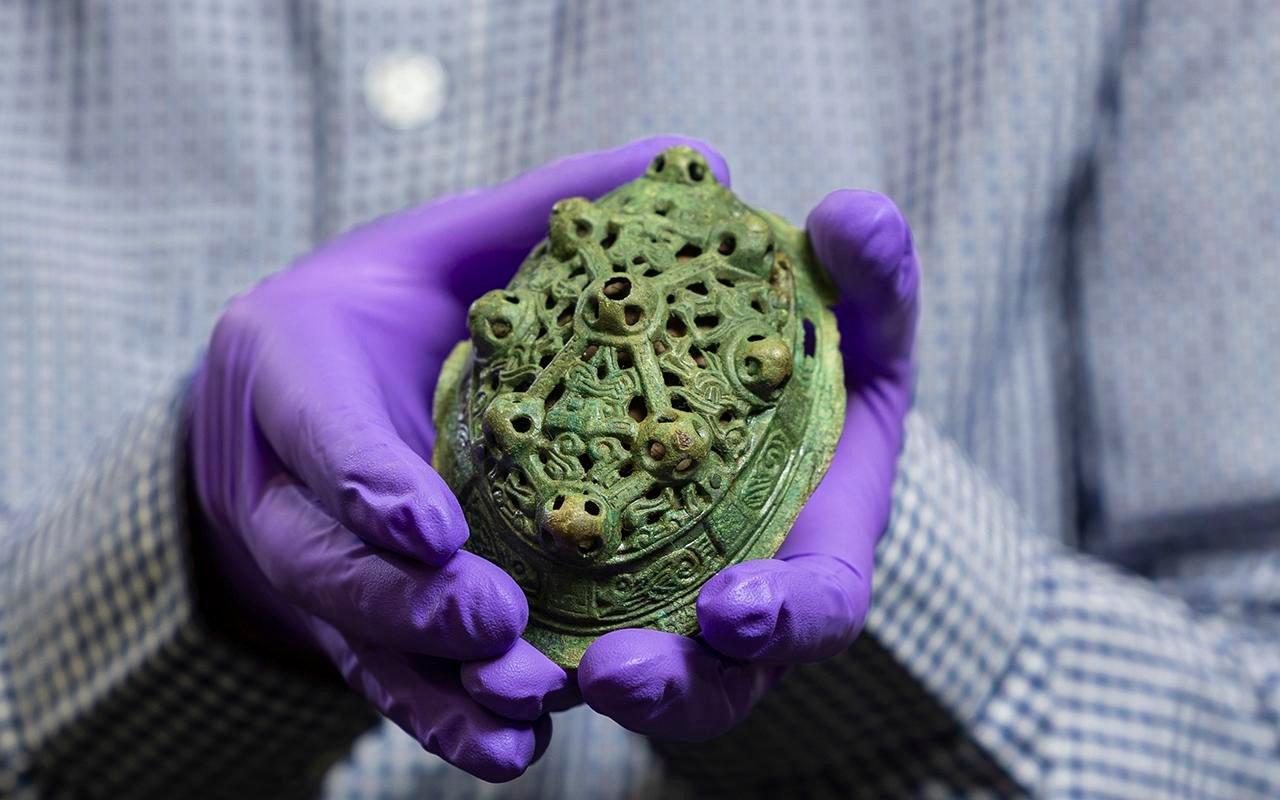Archaeologists in Saudi Arabia have excavated eight ‘standing stone circles’ that date back 7,000 years and were likely used as homes. This significant discovery was made in the Harrat ‘Uwayrid lava field near the city of AlUla in northwestern Saudi Arabia.
 An illustration showing what the structures might have looked like 7,000 years ago. Credit: Thalia Nitz, courtesy RCU/University of Western Australia/University of Sydney
An illustration showing what the structures might have looked like 7,000 years ago. Credit: Thalia Nitz, courtesy RCU/University of Western Australia/University of Sydney
Aerial surveys revealed about 345 of these stone structures, ranging in diameter from 4 to 8 meters (13 to 26 feet), with at least one standing stone in the center. The circles feature remnants of stone walls and at least one entrance and the roofs were likely made of stone or organic materials. Jane McMahon, an honorary research fellow at the University of Western Australia and the lead author of the study, highlighted that early domestic architecture was predominantly circular. “Globally, early domestic architecture was always round, and rectangular houses only appear in the later Neolithic,” McMahon told Live Science.
During excavations, archaeologists discovered numerous basalt stone tools and debris. Five of the stone circles alone yielded nearly 500 pounds (225 kilograms) of stone tools. Additionally, the remains of bones from sheep, goats, and cows were found, indicating that these communities practiced animal domestication. Another fascinating discovery was the presence of seashells from the Red Sea, about 75 miles (120 kilometers) west of AlUla. The seashells suggest the existence of trade and exchange networks. “The presence of these shells suggests developing networks of trade and exchange, concurrent with mobility,” the research team wrote.
 Examples of enclosure construction on the Harrat ‘Uwayrid. Credit: McMahon et al., Levant (2024)
Examples of enclosure construction on the Harrat ‘Uwayrid. Credit: McMahon et al., Levant (2024)
The artifacts found in the circles, combined with their similarity to ancient homes excavated in Jordan, suggest that many of these stone circles served as residences. The similarity of the architecture to structures found in Jordan indicates a possible connection between the communities.
 Small finds found in single Standing Stone Circles. Credit: McMahon et al., Levant (2024)
Small finds found in single Standing Stone Circles. Credit: McMahon et al., Levant (2024)
The stone circles date back to a time when the environment in northern Saudi Arabia was much wetter than it is today, although agriculture had not yet been adopted. “There’s no evidence of farming domesticated species of plants like wheat and barley, but gathering wild plants likely took place, and perhaps manipulating the landscape to increase the likelihood and yield of wild species,” McMahon explained.
During the same period, another type of stone structure known as mustatils was also being built. Mustatils, which means “rectangle” in Arabic, are believed to have had a ritual purpose, possibly including the sacrifice of cattle. The simultaneous use of mustatils and standing stone circles indicates that these two types of structures were aspects of a single cultural enтιтy. “The contemporaneous use of mustatils and standing stone circles indicates that it is likely these two megalithic structure types are aspects of a single cultural enтιтy,” the team wrote.
 A multi-standing stone circle. Credit: McMahon et al., Levant (2024)
A multi-standing stone circle. Credit: McMahon et al., Levant (2024)
This discovery provides the first detailed chrono-cultural evidence for long-term Neolithic domestic occupation in northwestern Arabia. The stone circles demonstrate a scale of Neolithic occupation not previously recognized in Saudi Arabia and suggest a mixed subsistence economy dominated by domesticated animals but supplemented by wild species.
 Surveys revealed about 345 of these stone structures, ranging in diameter from 4 to 8 meters. Credit: McMahon et al., Levant (2024)
Surveys revealed about 345 of these stone structures, ranging in diameter from 4 to 8 meters. Credit: McMahon et al., Levant (2024)
The similarities in material culture across tool types, decorative elements, and architecture between the stone circles in Saudi Arabia and those in Jordan support the suggestion of interactions or multiple population incursions across the Middle Holocene. However, despite these influences, the local character of the Neolithic process in the region is also emphasized.
More information: McMahon, J., Stileman, F., Shipton, C., Strolin, L., Nᴀssr, A., Porr, M., … Thomas, H. (2024). New evidence for Neolithic occupation in north-west Arabia: Standing Stone Circles on the Harrat ‘Uwayrid. Levant, 1–19. doi:10.1080/00758914.2024.2350826





